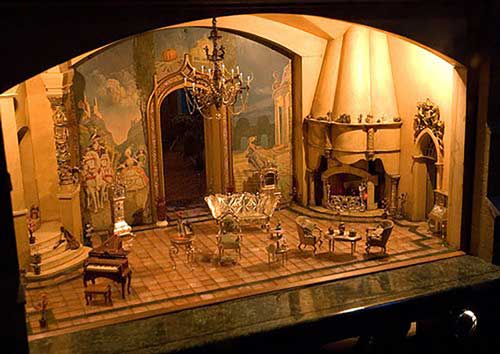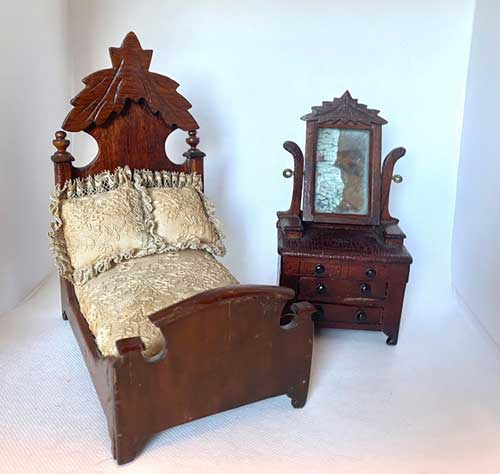November 2021
ANTIQUE DETECTIVE
What’s going on with dollhouse collectibles?
by Anne Gilbert
Dollhouses and their mini furnishings have a history going back centuries. Not only has their purpose changed but what is being collected has changed as well.
Some dollhouses are famous and worth thousands of dollars. One created by silent film actress Colleen Moore in 1949 is on permanent display at the Museum of Science and Industry in Chicago.
Historically, the earliest examples have been found in Egyptian tombs dating back 5,000 years. They were small wooden models of servants, animals and furnishings placed in the pyramids for religious purposes and their next lives.
Fast forward to the 15th century, when doll houses were referred to as ‘baby houses.’ They were in the form of cabinet display cases. They consisted of individual rooms, strictly for the enjoyment of wealthy adults.
Dollhouses as we know them were first built in the 17th century in Germany, Holland, England and France as a measure of social status.
It wasn’t until the early 19th century that dollhouses and their contents were considered suitable for children. An early English toy catalog featured doll and dollhouse miniatures made by the German firm of Lindner in 1840. With the advent of the Industrial Revolution, factories began mass-producing toys, dollhouses and miniature furnishings. By the 1850s, dollhouse furniture was being made in the popular styles of the day.

A Colleen Moore dollhouse. (photo courtesy of The Museum of Science and Industry, Chicago, IL)

Victorian bedroom furniture. (photo courtesy of Lily’s Little Dollhouse)
In 1889, American department stores such as Marshall Field in Chicago and Montgomery Ward were advertising dollhouses and their furnishings in their store catalogs. As families began buying dollhouses and mini accessories, manufacturers in Germany and America made replicas of miniature Victorian furniture. By 1917, American companies making them included the TynieToy Co., Schoenhut, and the Wisconsin Toy Co.
Up until World War I, Germany produced the most prized dollhouses and miniatures.
The materials the furnishings were made of have changed over the decades, as have the dollhouses. By the 1950s, the typical dollhouse sold commercially was made of painted sheet metal and filled with plastic furniture.
It wasn’t until the early 19th century that dollhouses and their contents were considered suitable for children. An early English toy catalog featured doll and dollhouse miniatures made by the German firm of Lindner in 1840. With the advent of the Industrial Revolution, factories began mass-producing toys, dollhouses and miniature furnishings. By the 1850s, dollhouse furniture was being made in the popular styles of the day.
CLUES:
CLUES: Serious collecting by adults began in the 1960s. A new wrinkle began in the 1970s when “do-it-yourself” dollhouse compartment rooms, made by amateur miniaturists, and furnishings were trendy. They are seriously collected today. Newly made miniature rooms designed by famous interior designer Michael Hogan are popular and costly.
Check the Internet to find about shows and associations to join.
Anne Gilbert has been self-syndicating the ANTIQUE DETECTIVE to such papers as the Chicago Sun Times and the Miami Herald since 1983. She has authored nine books on antiques, collectibles and art and appeared on national TV. She has done appraisals for museums and private individuals.

